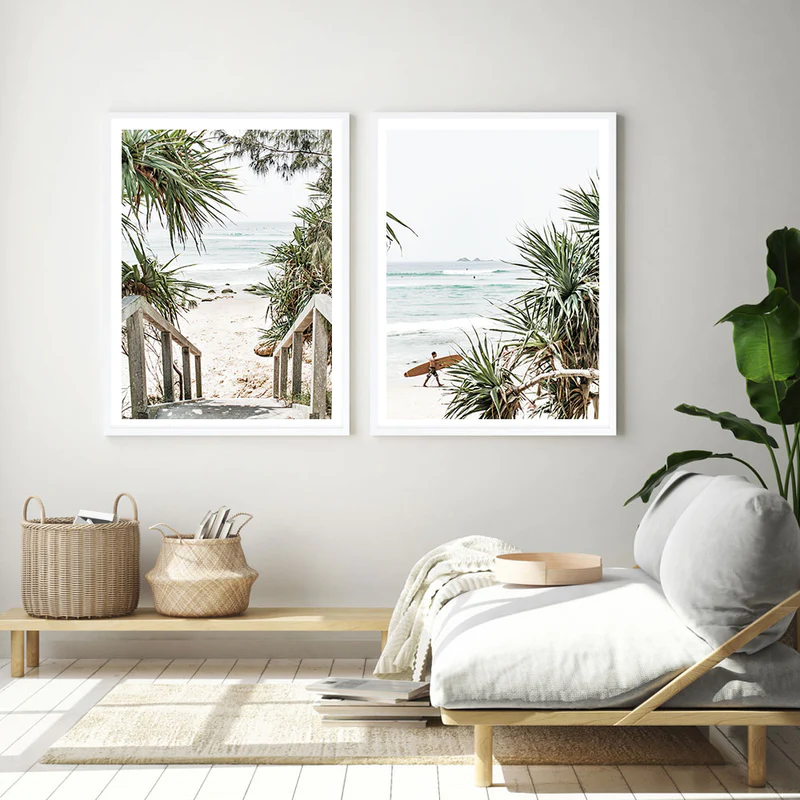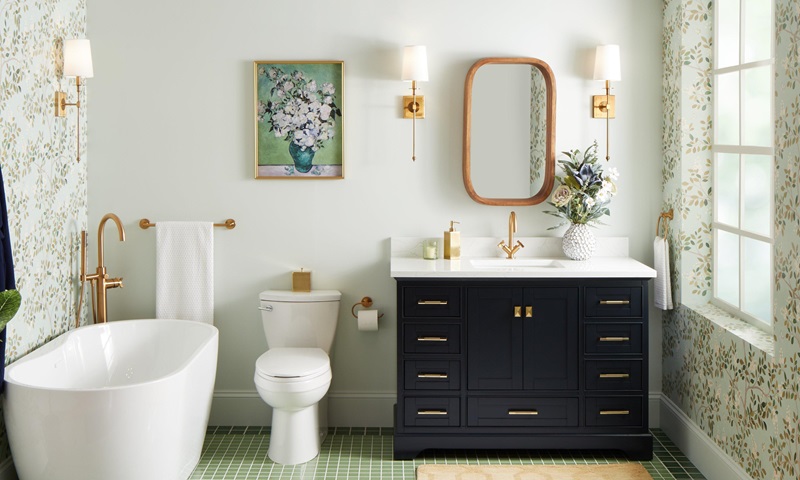From Drab to Fab: Discover 7 Stylish Ways to Refresh Your Space
Our homes make a significant impact on our lives and experiences, and designing them with intention is about letting each room perform the role for which it was meant. In this regard, the bathroom ought to be a pleasant retreat and the bedroom a haven. So, if you’re currently feeling like there is something constantly missing in your home, and are looking for ways to refresh it, we have discovered seven stylish ways to attune your home to your needs and maximise the intention of each room.
Add a Splash of Nature to the Walls

The popularity of green has never wavered in the world of interior design. This classic colour can swing conventional or modern depending on the shade. It’s adaptable and a wonderful way to introduce colour to your room without taking away from its natural aesthetic. From your main living area to your bedroom, add soothing green artwork for a touch of nature that can make your bare walls stand out.
Fortunately, there are fun and clever decorating ideas on how to mix “green” art into various rooms of your home to bring the outside in. Whether it’s a traditional or abstract botanical print, assemble a collection of botanical prints in the same creative style to create green wall art. Arrange them first, and then hang them from the wall to create a lovely focal point in any space.
You can also add a new layer and enhance the visual aspect of the genuine plants by placing botanical green art prints next to your actual plant arrangements. You could even choose a print of the actual plants. These days with everyone working from their home offices, beautifying them has taken precedence. Adding a set of nature-inspired Australian aboriginal art to your office is a wonderful approach to breathe new life into an area where you adore the way nature looks.
Botanical green prints are also a wonderful choice. On the other hand with its abundance of natural materials and textures, the bohemian style has its roots in the natural world. Your BoHo home will look fantastic with the addition of an abstract green artwork that emphasises the fundamentals of this design with plants and greenery. All in all, artwork that incorporates nature into our living spaces gives our house a nice finishing touch. It generates energy in an area and makes for a happy living environment when combined with live plants.
Inject Warmth in the Living Room
Decluttering and adding decorative accents like soft carpets, chunky blankets, and accent pillows filled with down are great ways to add warmth to a living area. Most people grow accustomed to their possessions to the point where they lose sight of the clutter.
You can set up “vignettes with purpose,” such as a reading nook, music area, or gaming area, and create “organised zones” for each section if your living room doubles or triples as a playroom, entertainment area, and TV room. For general organisation, think about standalone cube shelving for items like toys and books or floor-to-ceiling storage options with both closed and open storage.
Nothing without a Good Layering
How far away from the TV is your sofa? Is the French door blocked by your dining table? An unsuitable arrangement can significantly impede functionality, thus impeding the full potential of your house. Make sure any passageways are free of furniture and décor to get your space started, and for an open-plan area, create unobstructed views to the outside, TVs, and even your guests. It matters where you place things down and where you store them. Make sure that every dining area has a cleared space where you may set down a plate or drink.
The Lighting Counts
Every space should have multiple lighting options, such as task lighting, table lamps, and ceiling lighting, for optimal functionality. Tap lights are also useful for closets, pantries, and other dark spaces. A table lamp in the entryway provides a cosy and necessary glow, while a lamp on a nightstand naturally enhances reading.
For a simple lighting solution, think about using wireless switches and dimmers, which allow you to control lighting directly from your phone. Additionally, consider using window covers. Put the right curtains in every room. Their varying opacities-blackout, semi-opaque, and sheer fit different requirements for natural lighting.
No Tech in the Bedroom
Why is using technology in bed bad? Bedrooms are for resting, not for staying up late scrolling on Instagram. With the possible exception of Kindle, electronics like computers, phones, and tablets cause needless distractions and are detrimental to sound sleep. Place your tech devices in the little basket inside your closets before you turn in for the night. It’s just simpler to resist grabbing them when they’re inside.
Order is Key in the Bathroom

The bathroom is arguably one of the easiest spaces to begin simplifying. The rule is to throw an item away if its expiration date has passed. Set limits on new items as well. Limit your attention to no more than three at a time and use or discard them before going on. Assign top priority to essential items and keep backups and copies somewhere else.
You may store and organise objects vertically in cabinets using stackable drawers, and you can divide up smaller items in drawers using useful drawer dividers to make the most of the available space. Systems for dual-purpose storage, such as a cabinet with a concealed door and a mirror, can also work wonders.
Remember: Closets Aren’t Catch-alls
The rest of the house is struggling when closets are messy. However, if they’re set up correctly, it completely changes how the rest of the house operates. To begin, undertake a selective purge, making piles for giving, discarding, and keeping. Next, organise each closet’s contents according to the category—entry, sports, linen, etc. Anything helpful to achieving that goal should be the only thing placed there. This promotes the idea that every closet is a holy place that should only be utilised for that reason.